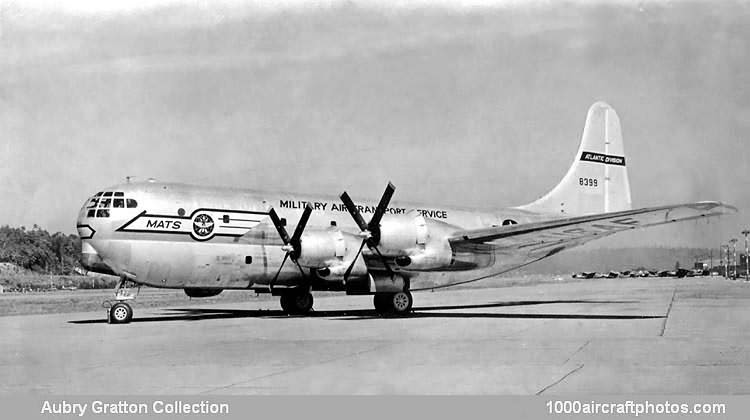05/31/2010. Remarks by Johan Visschedijk: "The initial order for the production versions of the YC-97A was for 27 C-97As (s/n 48-397 to 48-423, c/n 16009 to 16035), later increased by 23 (s/n 49-2589 to 49-2611, c/n 16211 to 16233). Boeing's Seattle Plant 2 was occupied with B-50 and Stratocruiser construction, so part of the wartime Renton plant was reopened to establish a C-97 production line.
Outwardly, the C-97A was distinguished from the YC-97A by the installation of a chin radome housing a search radar. Fuel capacity was increased by additional outboard wing tanks to a total capacity of 7,790 gal (29,485 l) and Hamilton Standard hydromatic propellers were used in place of the electrically-operated Curtiss models used on the YC-97As.
A forward cargo door was installed at the starboard side of the upper cargo compartment from the 28th C-97A onward, and all were fitted with an aerial delivery system whereby 25,500 lb (11,567 kg) of cargo suspended from the overhead rail could be parachuted out of the clamshell doors in 15 sec. In addition, two three- or four-blade propellers, too large for the cabin, could be carried on external mountings under the forward fuselage.
Three C-97As (49-2591, 49-2592, 49-2596) were fitted with an improved version of the Boeing Flying Boom developed on the
KB-29P to test the suitability of the C-97 as a tanker. The KB-29s were not well-matched to the more powerful B-50s then in service and could not be expected to refuel the jet bombers that were soon to enter service. Where the boom had been attached to the tail of the KB-29 and was operated from the former tail gunner's station, the location was more forward on the KC-97A.
The clamshell cargo doors were removed and a pod was installed for the operator, who lay prone, and the boom was attached immediately behind the pod. The C-97A proved eminently suitable for the job, but the three test aircraft, which had not been designed specifically for it, were reconverted to standard C-97As. Two C-97As were converted to C-97D and three to VC-97D.
The pictured aircraft carries the markings of the MATS (Military Air Transport Service) Atlantic Division."
